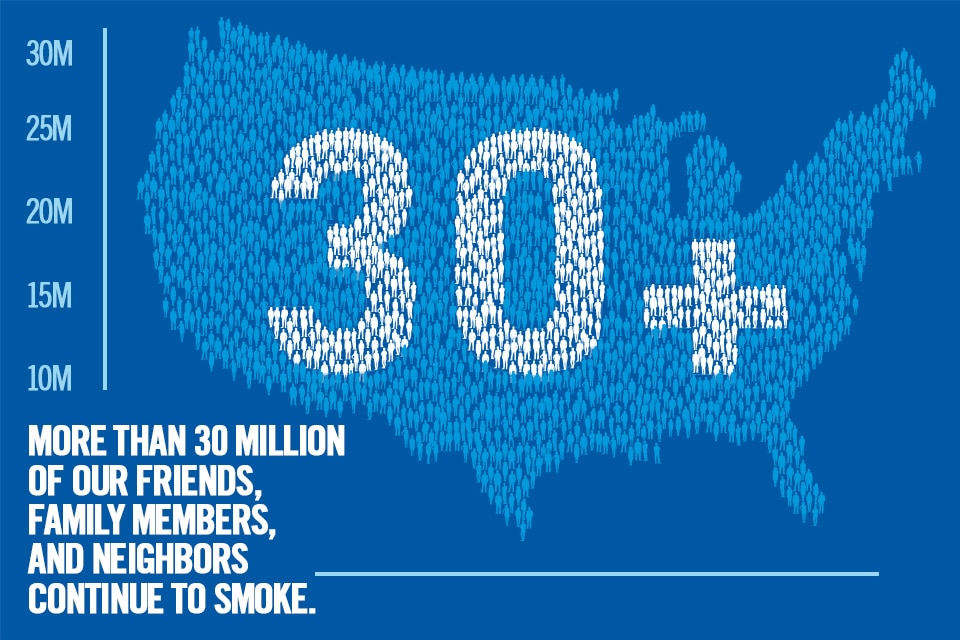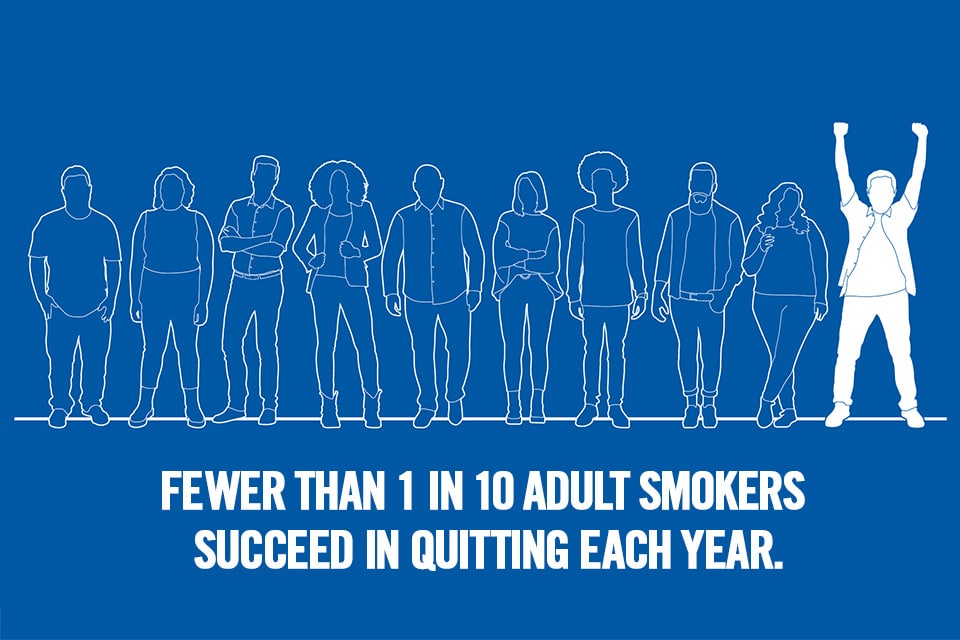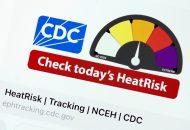Clearing the Air for 30M+ Smokers
COMMENTARY

We’ve come a long way in tackling smoking since the 1950s, an era when cigarettes were ubiquitous and, according to public health data estimates, over one in five American males smoked them regularly. Movie icons smoked on the big screen, people smoked in cars and bosses smoked at the office. We were surrounded by ashtrays, in airplanes, taxicabs, bars and restaurants. Smoking was commonplace, but the health risks associated with cigarettes were — and continue to be — severe.
In the United States, the risks associated with smoking gained public attention in 1964, when the surgeon general joined public health authorities warning about the dangers of smoking, causally linking it to lung cancer and other serious diseases. And yet, smoking remains the No. 1 cause of preventable death in the U.S. today, according to CDC public health data. For a while, there were huge anti-smoking campaigns. Smoking sections turned into No Smoking, period. But more than 30 million of our friends, family members and neighbors continue to smoke. For them, the smoking crisis of the 1950s is alive and well.

Smoking is addictive, and cessation often requires commitment, determination and a host of personalized strategies. Anyone can quit smoking, and each year many people will succeed. But pursuing a healthier lifestyle is difficult, even for a casual smoker who only has one cigarette with their morning coffee, or a social smoker who only lights up when out with friends on weekends.
Most smokers report a desire to quit, and there is plenty of help out there, from counseling to online tools and various medications. Historically, nicotine replacement therapy products have been found to be safe and effective for smoking cessation. Combining nicotine replacement therapy with counseling was found by researchers to more than double the chances of quitting successfully. But their combined success rate is still rather disappointing. According to U.S. public health data, while more than half of adult smokers report having tried to quit in the past year, less than one in 10 succeeded.

And what about smokers who don’t quit? Some simply don’t give up cigarettes because they enjoy the taste, the ritual, the physical act of smoking, or don’t want to go without nicotine. We’ve known for some time that nicotine is addictive. We now also understand that nicotine — though not benign — is not primarily responsible for the tobacco-caused diseases that kill nearly half a million Americans each year, as estimated by the Centers for Disease Control and Prevention. It’s the smoke — specifically the 7,000-plus chemicals released when tobacco is burned. If we remove the smoke, it’s possible to dramatically reduce exposure to these harmful chemicals.
Smoke-free alternatives to cigarettes do exist, and adult smokers who don’t quit need to understand their options. Recent decades have seen an innovative move from high-risk combustible products (such as cigarettes, cigars and pipe tobacco) to smoke-free alternatives (such as vapes, heated tobacco products, snus and oral nicotine pouches), giving our friends, family members and neighbors who would otherwise continue to smoke better alternatives to cigarettes.
The best choice is to quit or, better yet, to never begin using tobacco and nicotine products. No question. But between all or nothing there is another option. For those who don’t give up smoking, scientifically substantiated alternatives — which provide nicotine and aren’t risk-free — are measurably better than continued smoking. For example, a 2022 scientific review, which examined recent studies that looked at the use of e-cigarettes to help people stop smoking, found that “there is high-certainty evidence that ECs with nicotine increase quit rates compared to NRT.” In fact, the FDA has reviewed and authorized a number of smoke-free products, deeming them appropriate to promote public health due to their ability to decrease smoking, while understanding that no tobacco product is risk free.
Clearing up confusion around smoke-free products could create huge benefits for public health. The fact is, FDA-authorized, innovative smoke-free products do exist, and they have the power to drive real change toward accelerating an end to smoking. More can and should be done to build awareness and accurate understanding of the smoke-free category among our smoker friends, family members and neighbors, ultimately helping them to leave cigarettes behind for good.
Find out more about harm-reduction alternatives at www.pmi.com/better-choices.
Matthew R. Holman, Ph.D., is a former FDA public health scientist. He’s now vice president of U.S. Scientific Engagement & Regulatory Strategy at Philip Morris International. Why would a former FDA scientist work for a tobacco manufacturer? One simple reason: to help end smoking. Despite decades of warnings from the U.S. Surgeon General, more than 30 million of our friends, family members and neighbors continue to smoke. Holman wants them to be informed about smoke-free options that are significantly better than combustible cigarettes. FDA-authorized smoke-free products do exist. Holman wants smokers who don’t quit to know about them — now. You can reach him on LinkedIn.
This commentary was produced in partnership with and paid for by Philip Morris International.






















